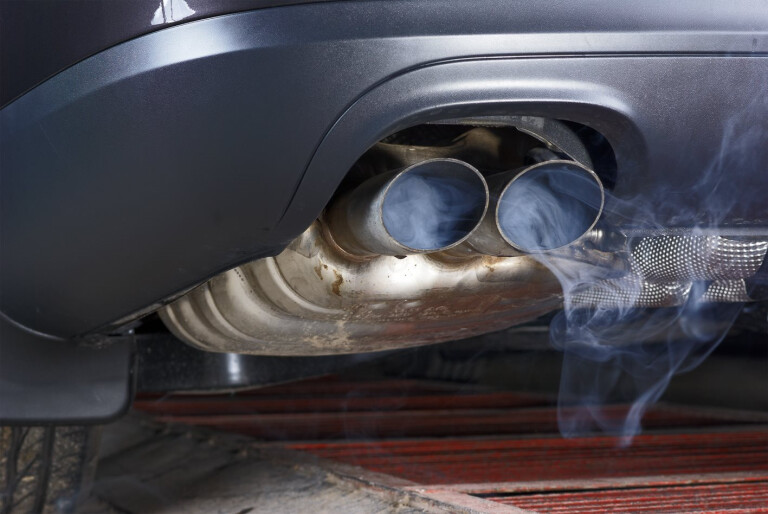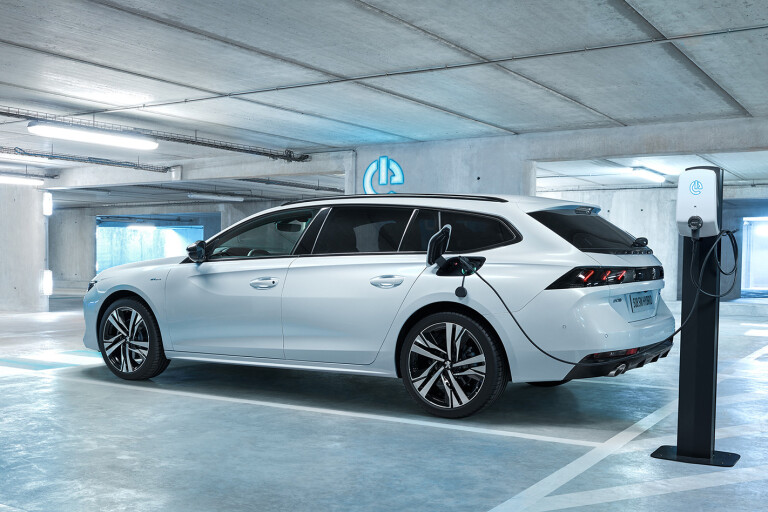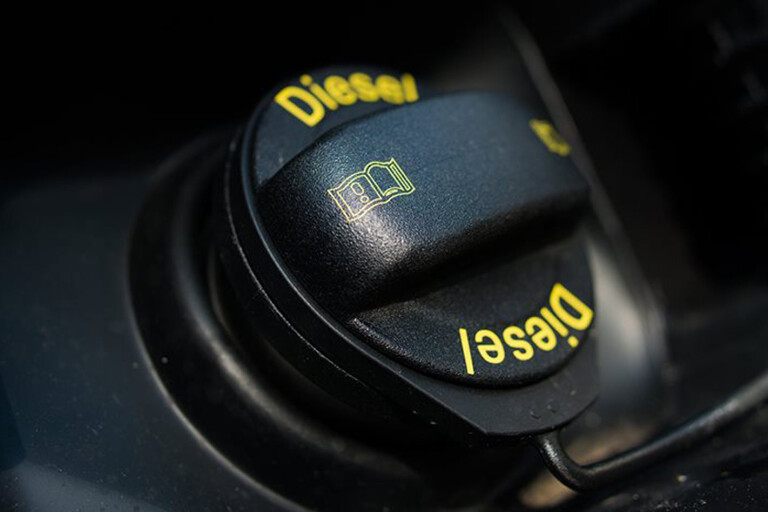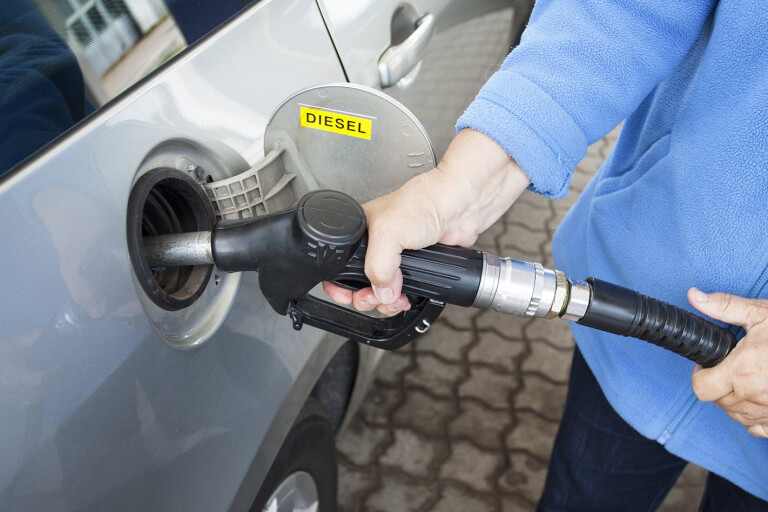
Snapshot
- Australia on track to cut emissions by 30-35 per cent by 2030
- Official target is still 26-28 per cent
- No commitment specifically aimed at automotive industry
Australian Prime Minister Scott Morrison has outlined the details of his Government’s net zero by 2050 plan today – which does not include a commitment to phase out cars powered by fossil-fuels.
Speaking today, Prime Minister Scott Morrison and Minister for Industry, Energy and Emissions Reduction Angus Taylor revealed the country’s long-awaited net zero package.
The latest projections revealed Australia is on track to cut overall emissions by 30 to 35 per cent by 2030, but the PM said the official national target of a 26 to 28 per cent reduction would remain unchanged.
However, the Government’s plan did not go as far as to commit to a dedicated automotive CO2 reduction goal and has been panned by industry figures.
A spokesperson for Volkswagen Australia, which has been a long time critic of the Federal Government's position on emissions, told Wheels: “This plan does not address the glaring anomaly whereby a nation of Australia’s wealth remains an automotive dumping ground for engines that our competitors cannot sell in other markets. The Government says that it will not enact change that impacts the taxpayer, but its inertia is already costing them.
"While almost all European cars currently on sale confirm to Euro 6, VW’s top 10 selling rivals continue to import to Australia Euro 5 engines that cannot be sold in Europe, where instead they sell many of the same models with Euro 6 engines.
“While Australia is yet to settle on official adoption date for Euro 6, which commenced in Europe in 2013 and prevails in developed markets, there is a very real danger that our country will continue to languish in Euro 5 at mid-decade. This would only result in a drastic diminishment in customer choice.”

Tony Weber, Chief Executive of the Federal Chamber of Automotive Industries (FCAI), also said the Government should be sending a stronger message, and 2050 “is too far away”
“It is important that there is now an acceptance that we need to do something and adopting a 2050 net zero target is a good start,” Weber told Wheels.
“However, for the automotive industry, we want to send a message in the shorter term about the importance Australia places on reducing CO2 emissions – which is why we have already adopted our own voluntary reporting scheme.
“We have called on Government before to also mimic that target and mandate it to send a strong message to manufacturers’ HQs around the world that we want the best possible technology into the hands of Australians.
"2050 is three decades away, which is difficult for a car industry which works on car life cycles of [around] five years. It’s too far into the never never.”
Hyundai said the firm will work closely with governments at all levels to help tackle the issue of climate change in Australia.
“Hyundai is in progress to achieve carbon neutrality globally by 2045. In Australia, our aim is to introduce as many zero emission vehicles (ZEVs) to the market as possible and to be known as Australia’s most innovative automotive brand.
“Hyundai will cease the sale of internal combustion engine (ICE) vehicles in Europe by 2035, in line with that market’s stated direction, and we expect to cease the sale of ICE vehicles in major global markets by 2040.”

The Government explicitly noted during today's reveal that its new plan focuses on "net zero, not absolute zero emissions” and stated reaching its goals does not necessarily require ending coal or other fossil-fuel consumption in Australia entirely.
Instead, the Government intends to use existing and emerging technologies, saying those will get the country 85 per cent of the way to net zero – the plan prioritising "clean" hydrogen and "ultra-low-cost solar", as well as battery storage of renewable power and carbon capture.
“Australians understand and support the need to take action on climate change, so do I and so does this Government,” Morrison told media on Tuesday.
“Australians want a plan that gets the balance right…that doesn’t legislate or mandate.
“We have already achieved more than 20 per cent reduction in emissions since 2005…we’ll meet and beat the 2030 targets.”
On Sunday, the National Party agreed to the PM’s net zero by 2050 target following weeks of resistance – allowing Morrison to present his plan to the 2021 Climate Change Conference, also known as COP26, held in Glasgow from October 31.
The announcement follows a report released by leading think-tank the Grattan Institute earlier this week which made several bold recommendations on what Australia needs to do to meet the net zero target – which go much further than what came to light earlier today.
Grattan Institute modelling shows that introducing an emissions cap of 143 grams of carbon per kilometre for new light vehicles no later than 2024, with an aim of zero tailpipe gasses by 2035, could reduce Australia’s emissions by at least 40 per cent between now and 2030 (with a cap of 25g/km) – at virtually no cost to taxpayers.

It said this would save drivers money – because zero-emissions electric cars are much cheaper to run than high-emitting petrol and diesel cars (with subsidies or rebates now available in most states and territories) saving owners at least $900 annually over the first five years – but warned that governments nationwide needed to also act to discourage driving by making public transport and cycling safer and more attractive.
They should impose congestion and per-kilometre charges on cars, make trains and buses as COVID-safe as possible, do more to separate cars and trucks from cyclists and pedestrians and consider lowering urban speed limits to 30km/h to reduce pollution and accidents, the modelling claims.
Other key recommendations included:
- Improving the quality of Australia’s fuel so that vehicles here can meet international pollutant standards – to start immediately for diesels and petrols by mid-2024 at the latest
- Adopting the Worldwide Harmonised Light Vehicle Test Procedure (WLTP) for vehicle emissions testing, and ensuring all new vehicles include on-board vehicle emissions monitors by 2024, with de-identified annual data released publicly
- Government funding for publicly accessible chargers that encourage substantial numbers of people to switch to electric vehicles
- State and territory governments should, by 2022, require landlords and vendors to disclose at the point of lease or sale whether their property has charging infrastructure for electric vehicles. The National Construction Code should be updated to require that new dwellings with off-street parking be ready for EVs from 2022.

Previously, with just weeks to go before a major climate summit in Glasgow, Treasurer Josh Frydenberg had backed a net zero target by warning that investors could take their money elsewhere if Australia was seen as lagging on climate action.
"Australia has a lot at stake," he said during a virtual speech to business leaders, reported ABC at the time.
"We cannot run the risk that markets falsely assume we are not transitioning in line with the rest of the world."
Australia has come under increasing fire from other developed countries and the United Nations in recent weeks and months for being one of the only remaining wealthy countries not to have committed to net zero, and for lagging behind in its goals to cut emissions in the short term too. Among those also facing heat are China, Russia and Saudi Arabia.
Before this policy was revealed, Morrison had only stated the Federal Government's goal was to get to net zero "as soon as possible, and preferably by 2050”, and had been under pressure to lift Australia’s existing target set in 2015 of cutting pollution by 26 to 28 per cent by 2030 below 2005 levels.
Prior to now, Australia’s main trading partners, including the UK, US and EU have committed to net zero 2050, but we haven’t. Additionally, the UK has a goal of reducing emissions by 68 per cent by 2030 (including a ban on the sale of new ICE vehicles), the EU by 55 per cent and the US by 52 per cent.

The Climate Change Conference was established in 1992, and is now in its 26th incarnation, being held in Glasgow from October 31 to November 12. It was due to go ahead in December last year but had to be cancelled due to COVID-19.
It was set up as part of the United Nations Framework Convention on Climate Change (UNFCCC) and involves every country on Earth being treaty-bound to “avoid dangerous climate change”. This year it is expected to focus on the issues of climate finance, phasing out coal and nature-based solutions.
The most significant outcome from the series of summits in recent years has been the Paris Agreement in 2015 where it was agreed to hold global temperature rises to “well below” two degrees celsius above pre-industrial levels – while “pursuing efforts” to limit heating to 1.5C.

At the same time, countries also agreed to non-binding targets to cut – or in the case of developing nations, to curb the growth of – greenhouse gas emissions in the near term, by 2030 in most cases.
However, it was known that these national targets would be inadequate to meet the terms of the Paris Agreement, in fact they would result in three degrees celsius or more of global warming, and so it was decided countries would need to return to the table every five years with fresh commitments.
A recent study carried out by the Intergovernmental Panel on Climate Change, the world’s leading authority on climate science, found there is a vast difference between the damage done by 1.5C and 2C of heating, and concluded that the lower temperature was much safer – and that there was still a chance for the world to stay within the 1.5C threshold but that it would require concerted efforts.



COMMENTS